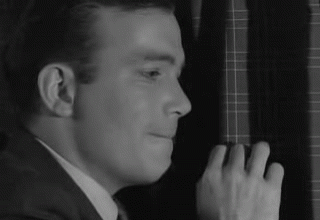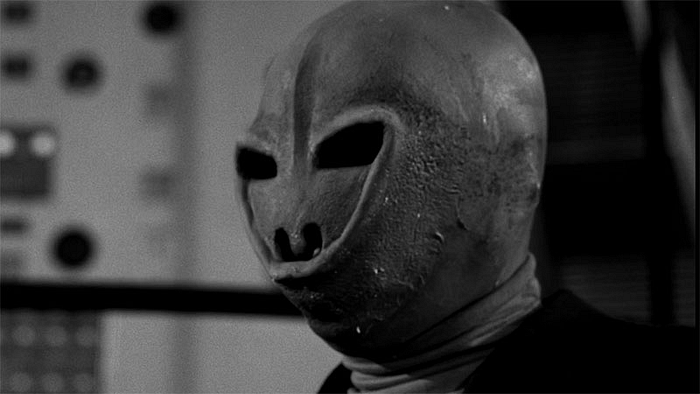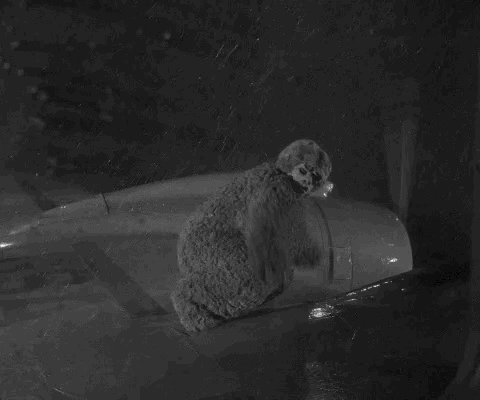The Accidental Lesson of Nightmare at 20,000 Feet
The 1963 episode Nightmare at 20,000 Feet is possibly the most celebrated episode of The Twilight Zone. Between Richard Matheson’s effective original story, Richard Donner’s tight and lean direction, and William Shatner’s performance. Even comic hacks that won’t stop mocking his portrayal of James T. Kirk find little to make fun of in his Twilight Zone appearance. It became known as one of the most suspenseful episodes of the surreal series. A scene where Shatner’s character, the recently institutionalized Robert Wilson, wordlessly realizes he’s being condescended to and sulks is particularly good and relatable. Even a jump scare scene in it still works, both because those were relatively fresh at the time and through effective staging.

However, even antiquarians and general fans of the episode often have to become apologists when it comes to the costume for the Gremlin itself. Simply put, it’s too fluffy and phony. Even William Shatner, who heaped rapturous praise on the the script for the episode, called it a “ridiculous furry costume” in his autobiography Up Till Now.

Generally such criticisms are dismissed by saying the episode was a product of its time. It’s similar to the other classic episode The Monsters are Due on Maple Street which features aliens that are just actors wearing recycled costumes from Forbidden Planet and which to a modern viewer look like they could have walked off the set of Plan Nine from Outer Space. The idea is that a time of cruder special effects and low budgets meant we couldn’t expect more effectively otherworldly entities.
Yet a more thorough examination of the series showed that the production team was capable of timeless creepiness with limited budgets. The android boxers of the episode Steel, another fifth season episode, are crude but they’re also still creepy and appropriate for the story being told.

Even comedic episodes such as the much more obscure Hocus Pocus and Frisby feature monster designs and makeup that are much more effective than the misguided Gremlin costume.

That’s to say nothing of classic episodes such as Shadow Play, And When the Sky Was Opened, and Living Doll which arguably didn’t have a special effect to their name. In short, even by the standards of the time, the costume for the Gremlin was a misstep and the production crews had repeatedly done better. Most revealing of all is that when the story was remade for the 1983 Twilight Zone movie, the new gremlin was not in anyway modeled off the 1963 version (presumably special effects advances would have made it look like the Sasquatch from Harry and the Hendersons if that were the intent.)
The thing of it is that the crew for Nightmare actually made the situation harder on themselves with that costume. This was a situation where simply a man standing on the wing of the plane in a regular business suit or a jumpsuit like a mechanic would have been a big improvement.
First off, Robert Wilson says there’s a “man” on the wing of the plane, and the gremlin as is looks like the first place your head would go from looking at it is that there’s a gorilla or a bear on the wing of the plane. It also feels ever so slightly more believable that somehow a mechanic could get stuck on the wing than a fluffy creature just floating in from nowhere.
Additionally, because the Gremlin is played essentially as an animal, its actions on the wing take on a sort of comical quality. When there’s a scene where the situation is escalated by the Gremlin sabotaging the plane engine, it seems to be doing so primarily out of curiosity. It’s the same during the jump scare scene where the Gremlin’s face is revealed to be inches from Wilson’s: It looks at him more in puzzlement than anything else. It’s also counterproductive to the tone of the show the few times that the Gremlin avoids being seen when Wilson tries to point it out. A shot where it jumps and floats off the wing looks more whimsical than anything else. While the intent is clearly to increase the ambiguity that the monster is real, it brings to mind One Froggy Evening short from Merrie Melodies.

Having the Gremlin be closer to a human being would not only would give the sight of him standing on a wing a more unreal quality, it would likely give the character a more menacing demeanor. If the actor were looking at the camera with cold, composed body language, then the Gremlin would seem much more malevolent as he looked through the window, avoided detection, and opened the engine to interfere with the internal components. It would even read as if it might know exactly which hose or wire to pull to make that engine fail in seconds. During that jump scare, with those glaring black-lined eyes, it could look as if it were about to punch through the window and pull Wilson out into the void instead of just try to make sense of what it’s seeing. The whole time, the Gremlin could come across as if it’s practically daring Robert Wilson to tell someone it exists, both knowing that would convince Wilson’s fellow passengers that he’s crazy.
Classic though it is, Nightmare at 20,000 Feet today shows just how effective restraint can be, and how timeless is simplicity. Yesterday’s subtly uncanny character can have more staying power than tomorrow’s outlandish character, even when it’s placed in an otherwise impeccable production. Those artists that want to creep/weird out audiences for generations will do well to remember that.
Dustin Koski is available to be told how wrong he is about this on Twitter.
